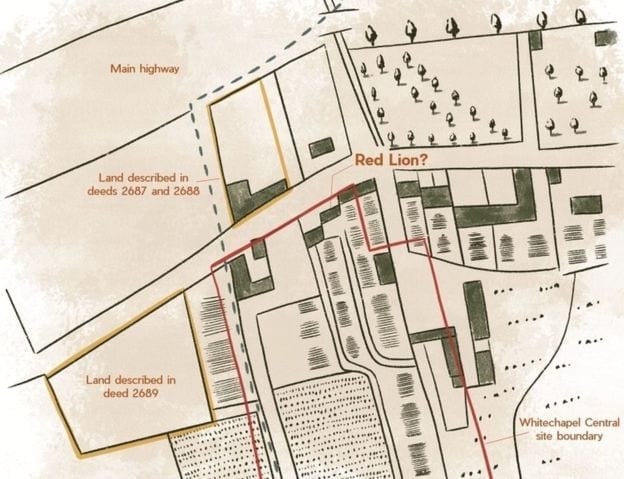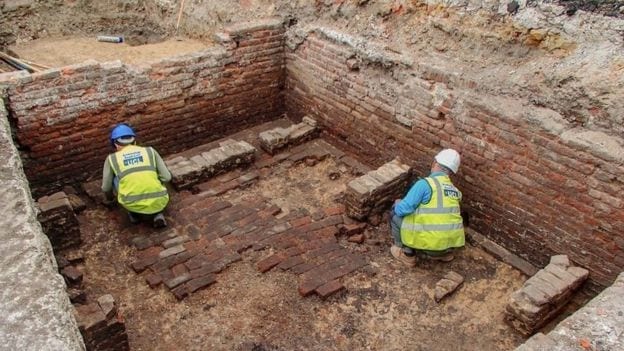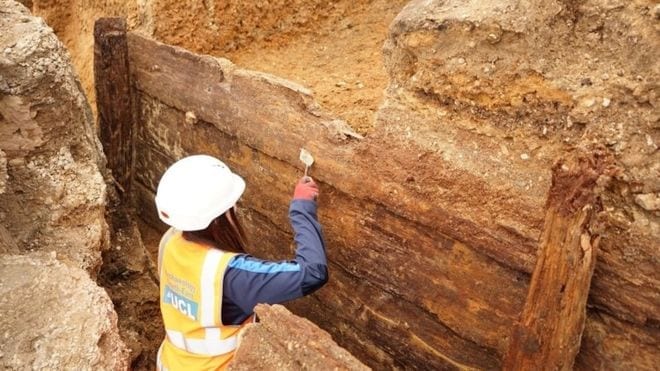Archaeologists have found the remains of London’s oldest playhouse, The Red Lion, in an excavation project on Stepney Way. The site is the former location of a SafeStore self-storage site, and was set to become a new block of luxury flats.
Thought to have been built around 1567, The Red Lion originated as a farmhouse, then a pub, before the garden was repurposed into an open-roof theatre. It was London’s first built-for-purpose, Elizabethan theatre. It has been lost – and its location highly debated amongst historians – for many years.
Carried out by UCL Archaeology South-East, the excavation took place last year. However, it was only last month that the analysis of findings – including timber structures, tankards, and what is thought to be a beer cellar – meant that archaeologists could confirm with a degree of certainty that the structure is indeed the lost theatre.

The Red Lion was created by John Brayne, who oversaw the renovation of the theatre in Shoreditch during 1576.
During a time where theatres staged plays by touring troupes, The Red Lion was a radical, innovative space where a repertoire of shows were performed by theatre companies who were based there. In fact, some of Shakespeare’s early plays are thought to have been staged at The Red Lion from around 1590.
The Red Lion predates the more famous Globe theatre, which was originally built in 1599 on Bankside. In fact, after it was dismantled, wood from The Red Lion was used in the erection of The Globe.
This news came after the remains of the Curtain Theatre (which opened in 1577) was found behind a pub in Shoreditch in 2012, and the Boar’s Head (dating back to 1598) was unearthed in 2019 during the construction of a block of student accommodation.

Emily Gee, from government heritage agency Historic England, told the Daily Mail that these recent finds “have immensely improved our understanding of the beginnings of English theatre”.
Gee is keen to “continue to work closely with the developer to interpret these archaeological remains and display them so the public will be able to understand them within the finished development and appreciate the rich history of this site”.
Words by Olivia Emily.
